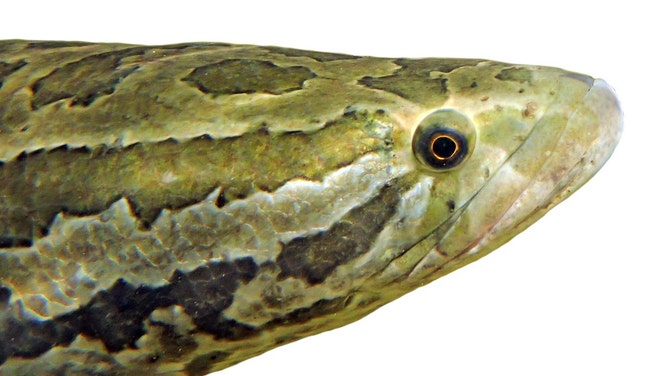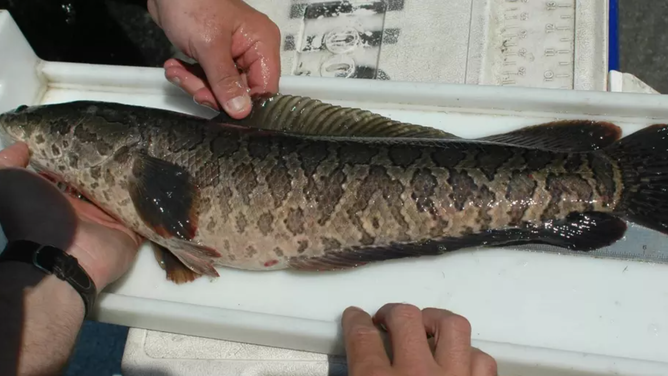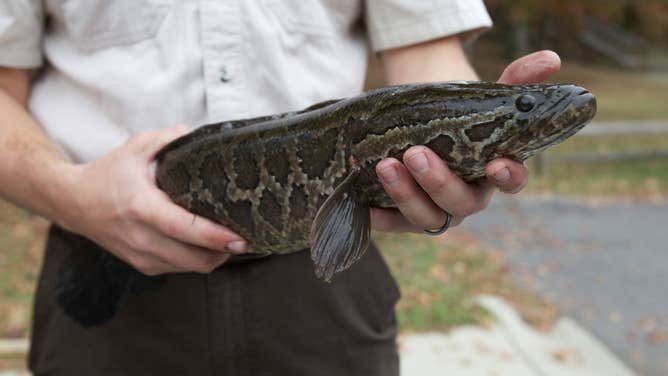Slimy, air-breathing 'Frankenfish' found in southeastern Missouri
This invasive species of fish also has the critical adaptation of being able to live out of the water for days at a time.
Highly invasive disease threatening trees all across New Jersey and Pennsylvania
First, it was spotted laternflies. Now, it's a highly invasive disease that could be affecting trees at neighborhood parks, college campuses, and nature parks all across New Jersey and Pennsylvania. FOX 29 reports.
JEFFERSON CITY, Mo. – Another northern snakehead, an invasive and air-breathing freshwater fish species, has been recorded in Missouri.
The Missouri Department of Conservation said the fish was captured by an angler on May 19 in the Duck Creek Conservation Area, which is located in the southeastern corner of the Show Me State.
This is the second northern snakehead recorded in Missouri. The first one was recorded in 2019 in the St. Francis River levees, an area about 90 miles southeast from the most recent sighting.
Why snakehead species are a threat

FILE - A northern snakehead.
(pmk00001 / USFWS / FOX Weather)
Originally hailing from Africa and Asia, a number of snakehead species have made their way to the U.S. The northern snakehead discovered in Missouri, specifically, is part of the Channa species, which is native to Asia.
The MDC noted the fish not only compete with native North American species for resources, but they are also aggressive predators that prey on the native species. Some of the prey include other fish, reptiles, amphibians and insects, according to the U.S. Fish and Wildlife Service.
FLORIDA'S MARINE LIFE DEPENDS ON KILLING INVASIVE FISH
A number of other features make the northern snakehead a fierce competitor for native populations.
"This fish has a wide temperature tolerance, can spawn multiple times in one year, and can survive in low-oxygenated waters by breathing air," said Dave Knuth, a biologist at MDC Fisheries Management.
How the fish can live without water

FILE - A snakehead.
(Ryan Hagerty / USFWS / FOX Weather)
The fish also have the critical adaptation of being able to live out of the water for days at a time. According to the USFWS, part of this is due to how exceptionally slimy they are – a sliminess that keeps the fish temporarily encapsulated in moisture while outside of water.
This slimy feature, along with their ability to breathe air, makes eliminating and containing the invasive fish a challenge. According to the MDC, if the fish are thrown onto shore, these adaptations allow the fish to migrate back into the water or find a new body of water, making them difficult to eliminate.
"The impacts of this species on native fish populations are still to be determined, and it’s something we will have to follow over time," Knuth said.
How the fish became 'Frankenfish'

FILE - A person holds an invasive snakehead, native to parts of Africa and Asia.
(Ryan Hagerty / USFWS / FOX Weather)
Given its adaptations, the northern snakehead might be considered the "perfect invasive species," according to the USFWS.
In fact, its characteristics have led some to give the freshwater fish nicknames, such as "frankenfish" and "fishzilla."
